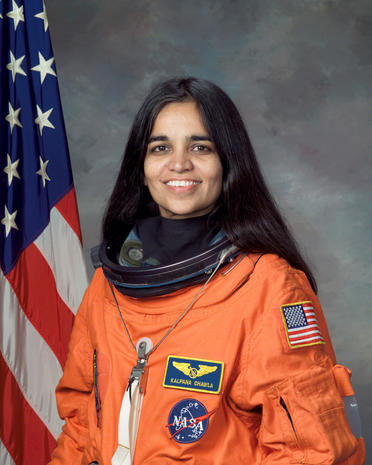

Air Force colonel and mechanical engineer, had piloted the first shuttle mission to dock with the International Space Station (ISS). He expressed remorse for the loss of the seven astronauts: Commander Rick D. Bush (1946– served 2001–) addressed the grieving nation approximately five hours after the Columbia broke apart over the southwestern United States. For many, the Challenger explosion was still a vivid memory that haunted them every time NASA launched a shuttle. The American public responded to the Columbia explosion with shock and disbelief.

(Later, over 2,000 pieces of debris, including human remains, were found.) President Mourns Columbia Crew

After receiving these reports, the NASA flight director declared a contingency (emergency) and contacted search and rescue teams in the area. Reported hearing a faint boom and then seeing trails of smoke and debris in the sky. The craft was scheduled to land at Cape Canaveral at 9:16 a.m. At the time transmission was lost, NASA engineers were attempting to explain to the crew the nature of the warning signals. Meanwhile, in Houston, Texas, site of NASA Mission Control, officials had lost radio contact with Columbia at 9:00 a.m. He also saw a red flare coming from the shuttle. PST, a news photographer in California observed pieces of the Columbia flying overhead. It was later determined to be part of Columbia's on-board camera. One of the photos showed a mysterious "purple streak" trailing the craft. An astronomer in San Francisco, California, shot five photos of the craft as it was breaking up in the atmosphere. Eastern Standard Time ), sensors on the shuttle indicated that there was trouble. On February 1, Columbia attempted reentry into the atmosphere. Consequently, no photos were ever taken by NASA while the Columbia was in orbit. On January 29, senior NASA official William Readdy (1952–) inquired about taking photos, but he did not make a formal request. On January 21 and 22, NASA engineer Alan Rodney Rocha begged NASA officials to request spy satellite photos of Columbia to evaluate the extent of the damage. The next day, while the Columbia was in orbit, NASA engineers discussed whether the foam could have damaged heat-resistant tiles that were necessary to prevent a fire upon reentry. When the shuttle lifted off from Cape Canaveral, Florida, a piece of hardened foam insulation dislodged from its external fuel tank and struck the underside of its left wing. The Columbia mission began amidst problems on launch day, January 16, 2003. NASA officials claim that a lack of funding prevented them from performing some necessary repairs, but Congressional reports have found differently. Other fatal accidents, such as the Challenger disaster in 1986 and the Columbia explosion in 2003, were preventable. Some accidents, such as the fire in the cockpit of the Apollo 1 spacecraft that killed three astronauts in 1967, were not due to negligence on the part of NASA scientists. Nevertheless, for many years critics have charged that NASA officials and engineers have frequently been guilty of arrogance or indifference, which have cost astronauts their lives. In fact, by the turn of the twenty-first century, NASA had made space travel seem to be an everyday occurrence. Sending human beings into outer space is never a routine exercise, and the space agency has generally been credited with maintaining a good record. Since its founding in 1958, NASA has been successful in accomplishing its missions. The final report, issued on August 26, 2003, faulted NASA for the explosion because the agency had overlooked problems that had been plaguing the aging Columbia for years. A thorough investigation was initiated the day following the explosion. The space shuttle program, which had been regarded by many Americans as engaging in "routine" missions, came under intense examination. It was the first major accident since 1986, when the space shuttle Challenger exploded less than two minutes after takeoff, with most of the nation watching on television. The space shuttle Columbia, carrying a crew of seven, broke up while attempting to reenter Earth's atmosphere after a sixteen-day mission. On February 1, 2003, the National Aeronautics and Space Agency (NASA) was dealt a severe blow. Published in 2003 available at Columbia Accident Investigation Board Excerpts from Columbia Accident Investigation Board Report,


 0 kommentar(er)
0 kommentar(er)
